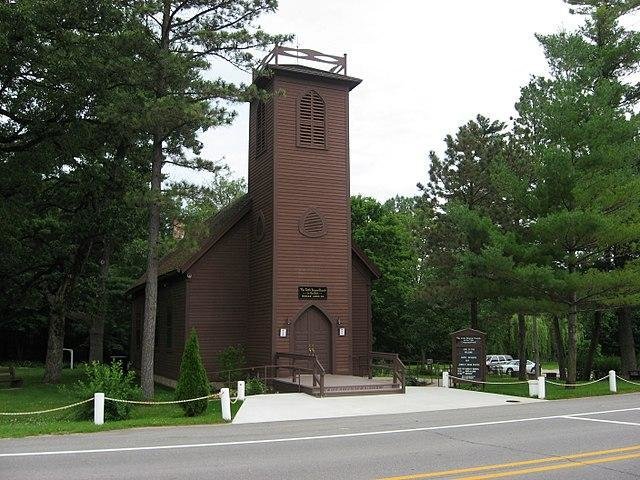Hymn preceded church in the wildwood
jmp.press@gmail.com
If you’re Protestant and were raised in the South during the 20th Century, you likely grew up singing this hymn:
Come to the church by the wildwood,
oh, come to the church in the vale. …
This item is available in full to subscribers.
Subscribe to continue reading. Already a subscriber? Sign in
Get 50% of all subscriptions for a limited time. Subscribe today.
Please log in to continueNeed an account?
|
Hymn preceded church in the wildwood
jmp.press@gmail.com
If you’re Protestant and were raised in the South during the 20th Century, you likely grew up singing this hymn:
Come to the church by the wildwood,
oh, come to the church in the vale.
No place is so dear to my childhood,
as the little brown church in the vale.
It’s a gently touching tune, its words taking us back to an easier era. Did you know an actual little brown church is connected to this song? What’s more, it wasn’t even built when the songwriter beckoned us to visit there. Here’s how it happened.
Back in 1857, William Pitts was a lovesick teenager. Just 19 years old, he was traveling by stagecoach from his home in Wisconsin to visit his sweetheart and future wife. When the coach stopped in a little place called Bradford, Iowa, Pitts got out and stretched his legs. He wandered to the edge of town and marveled at a beautiful valley in the woods created by the Cedar River. He pictured a church there, a pretty little brown church. It seemed so real he could almost see it.
The vision was with him when the coach resumed its journey. It stayed with him all during his visit, and was still there when he returned to Wisconsin. So, he sat down at a desk and wrote a song. “The Church in the Wildwood” was the result. That seemed to get it out of his system. Pitts put the song in a drawer and more or less forgot about it.
He eventually married his girlfriend. But they soon realized they needed to live near her elderly parents. So in 1862 they traveled once more by stagecoach to her hometown in Iowa. Once more, it stopped in Bradford. Pitts again got out and strolled to the countryside. This time, he was stunned by what he saw. A church was being built in the little valley, on the very spot where he had imagined it five years before! It was even painted brown, as he had envisioned. (Though the color choice had more to do with frugality than aesthetics; brown was the cheapest paint color available back then.)
Pitts taught a singing class at Bradford Academy the following school year and had his students sing his song at the church’s dedication in 1864. It was the first time “The Little Brown Church” was ever sung in public.
However medicine, not music, proved to be the young man’s calling. The Pitts family moved to Chicago in 1865 so he could attend medical school. He sold the rights to the song for $25 to pay his enrollment fee. After graduating in 1868, the good doctor went on to practice in Fredericksburg, Iowa, for nearly 40 years.
The song itself was a sleeper for decades. In 1893, Arthur Chapman and Charles Alexander used it in their worldwide evangelistic crusade, thus putting it on the musical map. Then four remarkable brothers got hold of it.
The Weatherwax Brothers Quartet was wildly popular in the early 1900s. They came from Charles City, about 15 miles from Bradford, and knew “The Church in the Wildwood” quite well. They even recorded it in 1910. So when famous evangelist Billy Sunday invited them to sing before 23,000 people at a massive revival in Philadelphia, they knew just the song for the occasion. Their performance was such a hit, “The Church in the Wildwood” became their signature song for the next 30 years. By the time The Carter Family recorded the tune in 1932, it was a classic.
It’s ironic that Pitts urges us in the lyrics to go to a place “so dear to my childhood,” since the church hadn’t even been built when he wrote those words. But hey, what else rhymes with wildwood? Given that tens of thousands of people stream to the restored church today as tourists (and even to get married there), let us overlook that small detail.
Yes, after 155 years folks are still coming to the church in the wildwood. And from the looks of things, they’ll likely continue to for years to come.
Have comments, questions or suggestions you’d like to share with Mark? Message him at jmp.press@gmail.com .
Keywords
holy cow history, church, church in the wildwoodOther items that may interest you







Comments
No comments on this item Please log in to comment by clicking here